Tag: Region: America
-

The Black Dahlia (2006)
I’m nowhere near deciding yet whether or not The Black Dahlia is good, but it’s certainly among the strangest and most fascinating Hollywood films I’ve seen in quite some time.
-

Abel Ferrara’s Battle with the Irrational
To watch the body of Abel Ferrara’s films, as I’ve tried my best to do over the last month and a half, is to see a man wrestling obsessively — sadomasochistically, even — with the Irrational. The stylized violence, the scenery-chewing performances, the gratuitous and exploitative female nudity — all are window dressing. What’s at stake here is nothing less than the very possibility of grace.
-
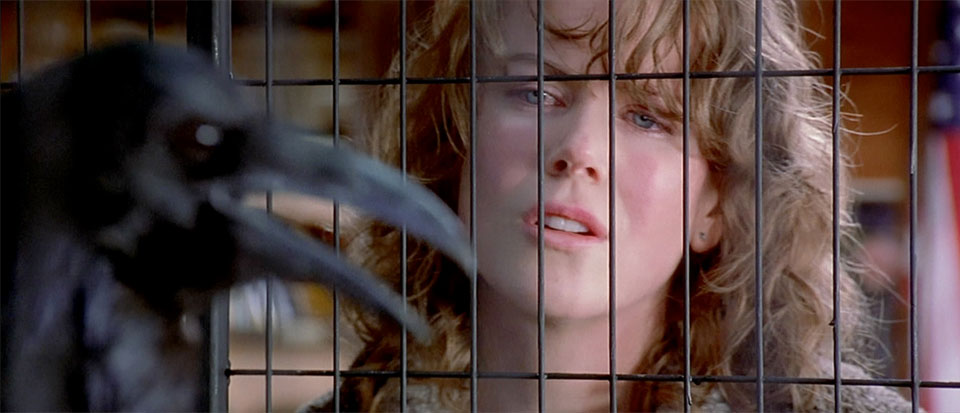
The Human Stain (2003)
But the adaptation of a written text to film also necessarily foregrounds the authority of images, imposing specificity on what an author might have chosen to describe more generally. I was surprised, for example, to find myself suddenly moved by an image of the small boxes in which Faunia stores the ashes of her dead children. In the novel, surprisingly little emphasis is placed on the ashes; Roth does not make of them an excuse for one of his patented ten-page diversions.
-
You’re Tearing Me Apart!
Or, a few words about Nicholas Ray’s Born to be Bad (1950) and Rebel Without a Cause (1955).
-

In a Lonely Place (1950)
What she whispers to him is less important than the unexpected moment of silent intimacy shared between these two lovers in a crowded, noisy room. The whole film is in that image — Dix bowing his head to her as a gesture of trust; Laurel closing her eyes in hope of love, then opening them to the sight of a detective entering the room.
-

Diving Deep into Caveh Zahedi’s In the Bathtub of the World
This essay was presented at the 2005 conference of the South Atlantic Modern Language Association.
-

I Am a Sex Addict (2005)
In the opening shot, Zahedi addresses the camera directly, introduces himself as Caveh, and tells us that for many years he was a sex addict. His film is a frank, neatly-plotted, and curiously moving recreation of those years. It’s also incredibly transgressive and very, very funny. Quite a balancing act.
-
The Moviegoer (1962)
If you’re reading this in the future — say, you’ve wandered here via some poof of Google magic — you should know that if I were to turn on my television right now (now being the afternoon of September 2, 2005), I’d flip past image after image after image of destruction, violence, and misery.
-

Short Takes
Some recent viewings: Notre Musique, The Best Years of Our Lives, Sunrise, Howard Zinn: You Can’t Be Neutral on a Moving Train.
-

Z Channel: A Magnificent Obsession (2004)
How would the tone of the film change, for example, had she included reports from the crime scene or interviews with his wife’s surviving family? Instead, we are offered only one quick glance at a photo of the woman who later would be brutally murdered, and a few fond remembrances of her from Harvey’s friends.
-
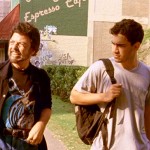
Slacker (1991)
Linklater, perhaps more than any other contemporary filmmaker, is alive to the potential and the basic human value of the men and women who walk in and out of his films. And he seems to have a particular fondness for the folks who live on the margins, whether by choice or necessity.
-
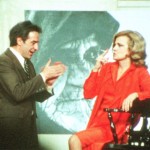
Fallen Creatures in a Fallen World: The Films of John Cassavetes
This essay was originally published at Sojourners.
-

Tarnation (2004)
Look closely at the image I’ve posted above. Mother and son. Finally at rest. Finally at peace. It’s one of Tarnation’s closing images and also one of its most poignant. A glimmer of hope. Love among the ruins. But here’s the thing: the scene is staged.
-

Tell Them Who You Are (2004)
Tell Them Who You Are has the best opening scene of any film I saw at this year’s festival. Haskell Wexler is standing in his camera equipment room, taking stock of his inventory for an upcoming sale.
-
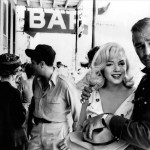
Arthur Miller, Then and Now
No new Cine Club notes this week, as we decided spontaneously last night (and with mixed results) to watch John Huston’s The Misfits (1961). I love parts of the film — Thelma Ritter’s jokes and Montgomery Clift’s performance, in particular — and I think it’s a fascinating film to talk about.
-

Random Musings . . .
On some recent viewings . . . Shame (Bergman, 1968) — Liv Ullmann and Max von Sydow star as Eva and Jan Rosenberg, cultured musicians who escape to a rural island when their orchestra is shut down during a war. Their new, more simple life as farmers is soon interrupted when their home is invaded, […]
-
Dreamer
I’m almost finished Dreamer, Charles Johnson’s novel about Martin Luther King, Jr.’s struggles in Chicago in 1966, and it’s amazing — the finest novel I’ve read in months. (Dreamer wants to become part of my stalled dissertation; I have, as yet, managed to fight that urge.)
-

Great Directors: Hal Ashby
This essay was originally published at Senses of Cinema.
-

Lost in Translation (2003)
I really enjoyed Lost in Translation — enjoyed it as much as any film I’ve seen this year. As I watched Lost in Translation, I kept thinking of two other films, and it suffered for the (admittedly unfair) comparison.
-

Little Feat Mix
Let me make this point perfectly clear: Little Feat is the great unsung American rock and roll band. The July mix is a collection of songs from their golden period — roughly 1972 – 1978 — the years when founder Lowell George was at his peak.
-

From the Journals of Jean Seberg (1996)
Journals is at its best, I think, when Rappaport intertwines the lives and loves of Seberg, Jane Fonda, and Vanessa Redgrave. All are of the same age, all made films directed by their husbands (another of the film’s more interesting concerns), and all participated actively in radical political movements.
-

A Woman Under the Influence (1974)
It took me three tries to make it through John Cassavetes’s A Woman Under the Influence. I wasn’t bored by the film; I was in agony.
-

The Sweet Sting
I’ve never been one to miss high school, but I do occasionally find myself longing for something from those days, something lacking in the day to day management of adult life.
-

A Few Words Upon Discovering Cassavetes
John Cassevetes is my latest obsession. On a whim, I recently picked up a used copy of Faces, the story of Dicky and Maria Forst’s disastrous attempts to find peace and companionship outside of their loveless marriage. Shot entirely in stark, high-contrast black-and-white, and featuring Cassevetes’s trademark dialogue, Faces feels at times like a documentary — voyeuristic, discomforting, and brutally real.
-
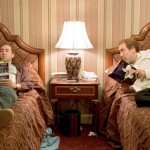
Adaptation (2002)
The problems of irony, particularly when of the postmodern bent, are on mind-numbing display in Adaptation, a film that collapses under its own self-referential weight so many times that, at some point — and I think it was right about the time that Meryl Streep started humping Chris Cooper — I stopped watching the film and began waiting for it to end.
-

Full Metal Jacket (1987)
I wonder if it might be more useful to call FMJ an anti war-movie movie. For the auteur is obviously fascinated, in a deliberately self-reflexive way, with the influence of images and storytelling on the formation of what might be described as ideological mythology.
-

Frida (2002)
Julie Taymor’s Frida is a better-than-average 2-hour biopic, evidencing many of the typical strengths and weaknesses of the genre — a fascinating life told too quickly that borders, uncomfortably at times, on hagiography.
-

Punch-Drunk Love
I assumed that I would witness something special in a dramatic performance from Adam Sandler, which I did, but I wasn’t expecting such precise and economical filmmaking.
-
Life at War
If there’s such thing as a truly legitimate call for the use of art as a practical means to change the world, then it will probably never find a more sure voice than Denise Levertov’s.
-
American Pastoral (1997)
What most fascinates me about this novel—along, of course, with Roth’s beautiful prose—is its inability, ultimately, to make any sense of the Swede’s tragedy.